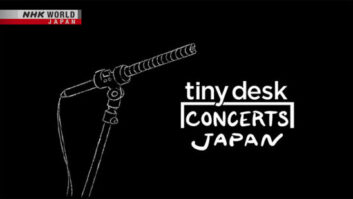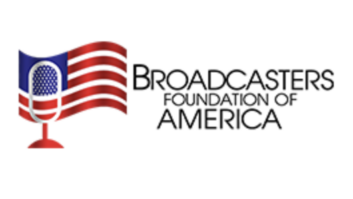Dateline: New York, Dec. 31, 2019As engineers prepared to shut down the last of the city’s FM radio stations at midnight tonight, one wondered aloud whether anyone would notice.
“We haven’t had any signs of real listenership for years,” sighed Ralph Burns, chief engineer of WNEW, as he packed a box of spare parts at the station’s transmission facility atop the Empire State Building.
Burns’ station and several others that still share the transmission facility, plus a few more at Freedom Tower, will go dark as the decade ends tonight, ending the long saga of broadcast radio in a city that played a key role in its early development.
When New York’s AM radio band went silent six years ago, broadcasters hoped the city’s FM channels might pick up some listeners and revive.
But as FM stations around the country continued to switch off in increasing numbers, broadcasters in even this once-largest of radio markets saw the writing on the wall.
Sales of new receivers had fallen to zero since the AM shutdown, an attempted transition to digital radio broadcasting had failed and FM audience numbers had plummeted steadily over the last decade.
In a sad irony, there was a time when this particular new year had been touted as a target for reinvigoration of the medium — a promotional program named “Radio 2020” was launched by broadcast trade groups in 2007, when the industry’s troubles began.
Instead, the dawning of the year will bring an end to the medium, its former listeners happily ensconced elsewhere, now served by so many other, more modern media sources…
Plausible?
Could the bit of fiction above really come to pass? Or will a far rosier picture emerge by that time, in which IBOC digital radio is a triumph, broadcasters have switched to all-digital mode and their content flows with audience-leading numbers on multiple other platforms?
The most likely outcome is somewhere in between, of course; but some recent indicators present disturbing signs that tough times lie ahead for traditional radio.
For example, an April study by Forrester Research showed that traditional (non-Internet) radio listening by U.S. households has dropped 18 percent in the last four years, while Internet usage is up over 70 percent during the same period.
Among the media usage surveyed in the study — TV, VHS/DVD, video games, newspapers and magazines were also included — radio was by far the biggest loser across the period (2004–2007). Other research has shown similar results.
If unabated, this behavioral trend could push radio to marginal status in fairly short order.
Another important element is the movement toward new portable communications devices that include A/V capability but largely do not include AM/FM radio tuners.
Many millions of these devices are sold each year, so it might not take long for the proliferation of non-radio-equipped personal A/V devices to become the norm.
Finally, although cars sold in the United States continue to be equipped with AM/FM radios, an emerging trend includes mobile Internet connectivity, as well.
While this will remain a high-end feature for awhile, its popularity will almost certainly drive it into the mainstream fairly quickly, and we could see a trend toward Internet radio listening reaching a state of parity with terrestrial radio in the automotive listening environment.
In a New York minute
We are often not very good at predicting the future, even when we possess good understanding of relevant past models. For reference in this case, we usually turn for guidance to how the broadcasting industry grew and eventually became a ubiquitous economic and cultural force in American society.
It took decades to get to that point, but once there it remained in the position for decades since. Radio, in particular, has fended off numerous challenges, and seems nearly impervious to threat as a result.
How could anything challenge it? Or even if a viable contender arose, surely it would again take decades to topple the radio from dominance, right?
Perhaps the strongest of many assets that have enabled radio to maintain that enviable position is its value proposition to audiences. It’s hard to beat free service, especially by any new entrant that relies on a fee-for-service model — such as satellite radio or the Internet.
That assumption seems unassailable, and has proven so for a long time. But there’s a key feature to one of those challengers that changes the equation.
Consider that all previous media have been essentially one-trick ponies, in that each medium required a complete and independent architecture to deliver one, or at most, two related forms of content.
Books delivered text, or text and images; records, radio and CDs delivered audio; movies delivered moving images, then added sound; TV, VHS and DVD delivered audio + video; and so on.
The Internet, however, is a far more fungible medium. Within one architecture, and via a single conduit to the user, it can deliver any of media just mentioned, and more.
Moreover, it can provide it in an inherently interactive way by virtue of its two-way nature.
Yes, it costs more to make this connection to any given user than the broadcast model does, but when the user considers the total return on that investment, any — or perhaps all — of the traditional, single-purpose media may find themselves on the losing end of the analysis.
The current availability and economies of scale for broadband Internet service already represent a great value, and these will both only improve over time. Thus a single, highly affordable, paid pathway provides users with access to a vast range of content presented in practically any medium (text, image, audio, video, etc.), and with accessibility and quality levels that rival traditional forms today — the latter continuing to improve at a fast pace.
Therefore, even though it’s a paid service, the Internet provides (at least potentially) so much more than any single free service that the cost per Internet media stream seems to approach free itself.
Moreover, in many developed parts of the world today, Internet access is viewed as a utility — like electricity or water — in that it is assumed to be generally available and its cost is simply part of nominal household expenses. Therefore the access to any individual (non-subscription) application or service via the Internet indeed appears free.
And thus most Internet radio services may already rival the value proposition of traditional radio, with some streams surpassing it, given the strong appeal of their more niche-oriented content to some users.
Add to this the growing availability of Internet service via wired and wireless access, and you finally have a challenger that could, in aggregation, do to radio what no other competitor has been able to since the establishment of the senior medium.
So with apologies to Howard Stern, we note that the Internet is well on its way to being crowned “King of All Media.”
We also acknowledge that the Internet’s bidirectional nature makes it a more egalitarian avenue for media traffic, offering the personalization and democratic access well suited to the preferences of today’s — and likely even more so, tomorrow’s — audiences.
Finally, we understand that the hyperlinking and social networking attributes of the Internet serve to further accelerate its appeal.
It’s not hard to conclude that this medium is a potential juggernaut, and that we may have as yet seen only the first few degrees of its ultimate trajectory’s arc.
Further, its impact may be felt faster than we can imagine, given the perfect storm engendered by the factors outlined above. The Internet is not just riding on the coattails of Moore’s Law (which is a techno-economic phenomenon), but on a much more powerful sociological corollary — one that violates all previously known methods of analysis.
Tune in tomorrow
How will the story we started above actually conclude?
Given that IBOC is (intentionally) an attempted extension of the established paradigm, how might it fare given the above analysis? Can another single-purpose, dedicated medium and device format succeed in this environment — even as a free service — or has that time already passed?
Another point to ponder: What happened to the radio companies and their personnel in that story? Did they fade away with their transmitters’ signals, or did they transition successfully to the new milieu?
That question is perhaps most critical to readers of this publication, and it’s the hardest to answer today. Yet it’s also the component of the story’s outcome that lies most within the industry’s own hands to influence.
As Ebenezer Scrooge asked the Ghost of Christmas Yet to Come: “Are these the shadows of things that will be, or that may be, only?” As Scrooge learned, it’s never too late to make some changes that bring the story to a happy ending.












